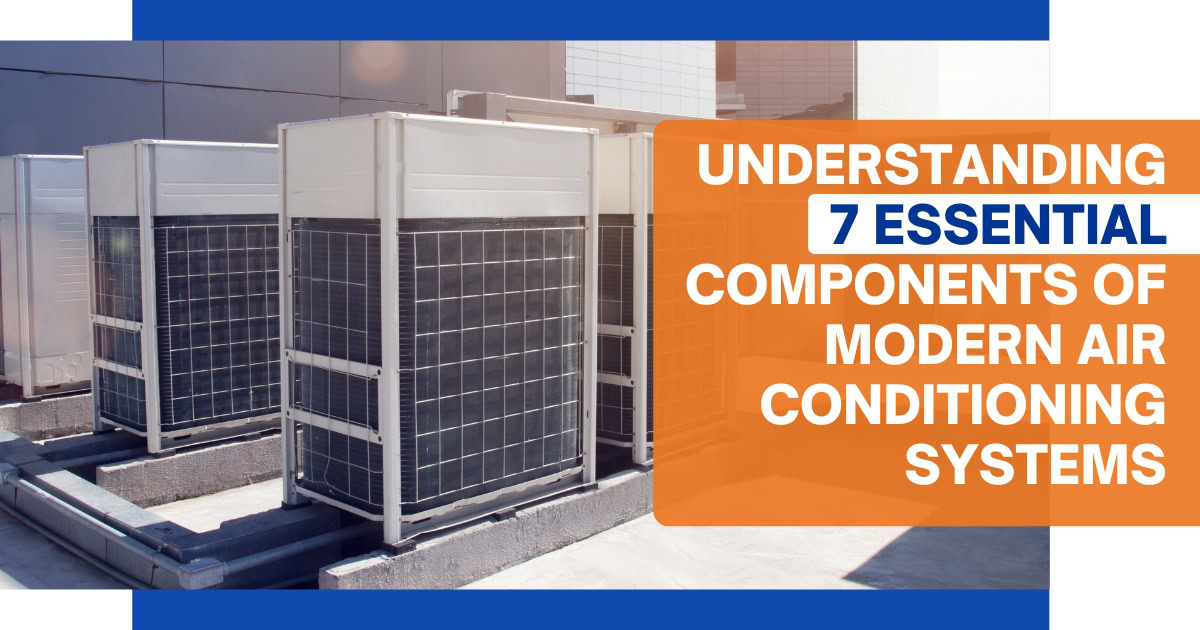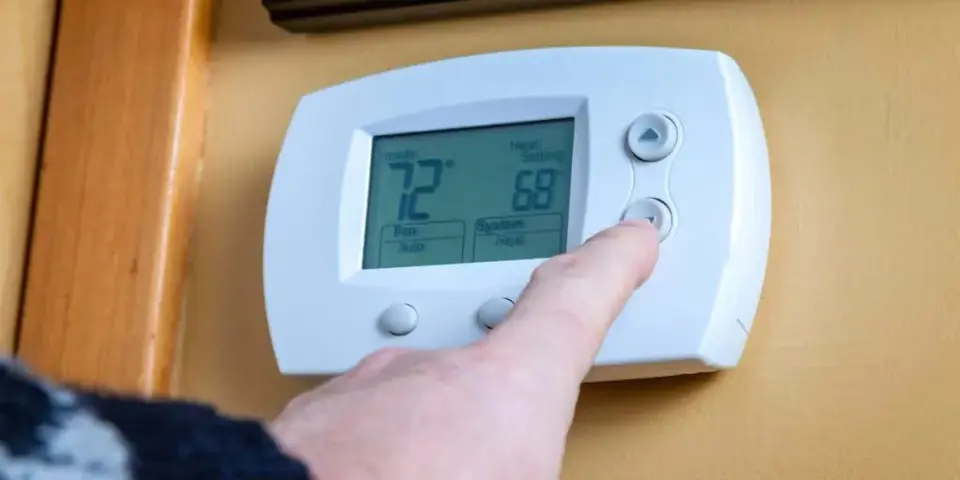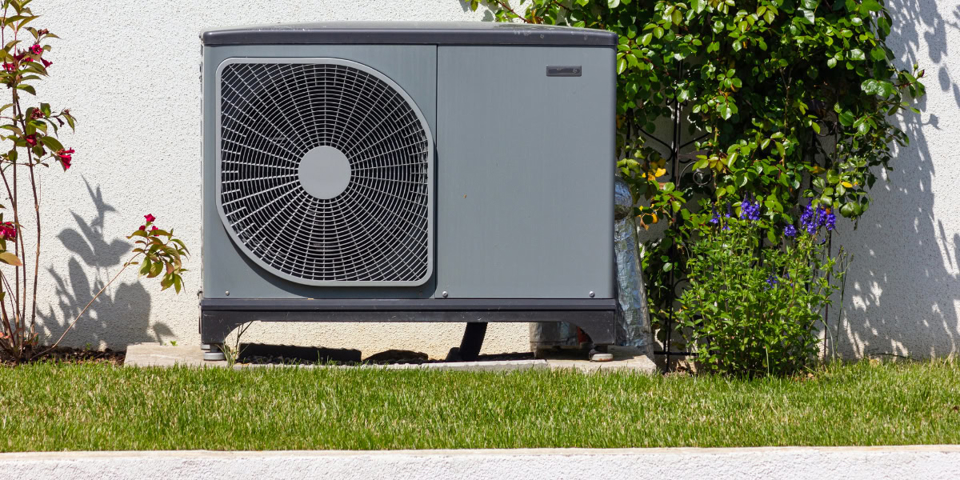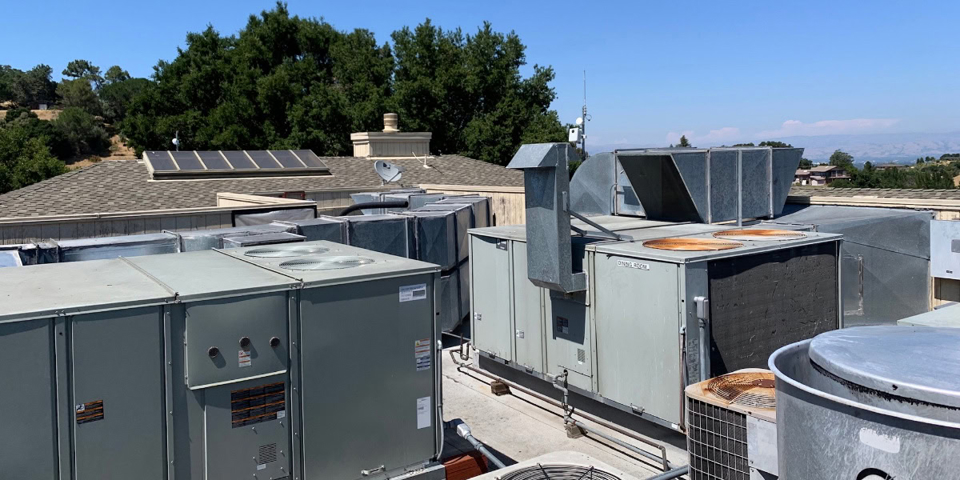Air conditioning is now vital, especially in areas with extreme weather. Knowing the key parts of an AC system can help you use it better. It will also help you maintain it. In this blog, we will discuss the seven essential components of modern air conditioning systems and their functions.
What Are the Main Parts of an Air Conditioning System?
Modern air conditioning systems have several key parts. They work together to control indoor temperatures. Here are the seven primary air conditioning components you should know about:
1. Compressor
The compressor is often referred to as the heart of an air conditioner. It compresses the refrigerant, increasing its pressure and temperature. This prepares the refrigerant for heat exchange. The outdoor unit has the compressor. It ensures the refrigerant flows through the system. Regular maintenance of this air conditioner part is vital. It prevents overheating and inefficiency.
A malfunctioning compressor can lead to poor cooling performance or complete system failure. Signs of compressor issues include unusual noises, reduced cooling, or high energy bills. To avoid such problems, it is advisable to schedule regular inspections by professionals.
To improve the longevity of the compressor, use your air conditioning unit under recommended conditions. Avoid overloading the system, especially during extreme heat. An energy-efficient compressor can cut costs and increase cooling.
Additionally, some advanced air conditioning systems now use variable-speed compressors. They let the system adjust cooling output. This saves energy while keeping indoor temperatures steady.
2. Condenser Coil
The condenser coil is another vital air conditioning component. It works in conjunction with the compressor to release heat absorbed from the indoor air. As the refrigerant passes through the condenser coil, it transforms from a gas back into a liquid state, releasing heat to the outside environment. Keeping the condenser coil clean ensures your system’s optimal performance.
Dirty or clogged condenser coils can hinder the heat exchange process, causing your system to work harder and consume more energy. Cleaning the condenser coil once a year can increase efficiency and extend your AC’s lifespan. For businesses in areas with high pollen or dust, more frequent cleaning may be necessary.
Modern systems now use advanced condenser designs, such as microchannel coils. They are more compact and efficient than traditional designs. They offer better heat dissipation and lower energy use.
3. Evaporator Coil
The indoor unit of the air conditioner houses the evaporator coil. It absorbs heat from the indoor air, cooling it before the system circulates it back into the room. This coil works in tandem with the refrigerant to ensure effective cooling. Routine cleaning of the evaporator coil improves air quality and system efficiency.
If the evaporator coil becomes frozen due to restricted airflow or low refrigerant levels, it can affect the cooling capacity of your air conditioner. To prevent freezing, ensure that you keep air filters clean and maintain refrigerant levels. A cover can protect the unit from dust and wear.
Humidity control is another important function of the evaporator coil. The coil removes moisture from the air. It helps create a more comfortable indoor environment, especially in humid areas.
4. Refrigerant
The refrigerant is a chemical that circulates in an AC system. It transfers heat from indoors to outdoors. Without refrigerant, the cooling process would not be possible. Over time, refrigerant levels may decrease due to leaks, so regular checks are crucial.
Low refrigerant levels can lead to inadequate cooling and increased energy consumption. If you suspect a leak, it’s essential to have a professional assess and repair the system. Using the right type and amount of refrigerant is also vital for the system’s efficiency and environmental compliance.
With advancements in technology, environmentally friendly refrigerants are now available. These options cut the system’s carbon footprint and increase performance. Be sure to discuss these alternatives with your service provider.
Proper refrigerant management is also crucial. Incorrect handling can harm the environment and void warranties. Always rely on certified professionals for refrigerant-related tasks.
5. Air Handler
The air handler houses the fan and other parts. They distribute cooled air throughout your space. This AC part ensures that cooled air reaches every corner of your business. Proper maintenance of the air handler improves airflow and system longevity.
Dust and debris can build up in the air handler over time. This reduces its effectiveness. Regularly clean the unit and replace filters. This will increase performance and air quality. Additionally, check for any unusual noises or vibrations that may indicate a mechanical issue.
Installing a UV light in the air handler can reduce microbes. This improves air quality and makes the unit more efficient. Periodic inspection of electrical connections within the air handler also ensures the safety and reliability of your system.
Many modern air handlers now include variable-speed fans. These allow for more precise control of airflow, reducing energy use and improving comfort levels.
6. Thermostat
The thermostat is the control center of your air conditioning system. It allows you to set and adjust the desired indoor temperature. Modern thermostats, including programmable and smart versions, provide better energy efficiency. Ensuring the thermostat is in good working condition is critical for precise temperature control.
A smart thermostat can offer big benefits. It allows remote control and tracks energy use. However, even basic thermostats need regular battery changes and calibrations. We need them for accurate function. Programming your thermostat to adjust at different times can save energy.
For households with multiple zones, investing in a zoning system can pair effectively with smart thermostats. This setup lets you control temperatures in different areas. It improves comfort and saves energy.
7. Ductwork and Vents
Ductwork and vents form the distribution network for your air conditioning system. They guide the cooled air from the air handler to different areas of your property. Proper sealing and insulation of ducts help prevent air leaks and energy loss.
Checking ducts for leaks and keeping vents clear can increase airflow and system efficiency. Dirty ducts can harbor allergens. So, periodic cleaning helps indoor air quality.
Consider upgrading to insulated ductwork, especially for systems in older properties. This reduces energy loss and improves overall efficiency. Additionally, installing adjustable vents allows better control over airflow to different parts of your business.
Ductless mini-split systems are a popular alternative to traditional ductwork. These systems cool specific areas. They waste less energy and are more flexible.
Why it’s important to understand air conditioning components
Understanding the parts of an air conditioning system can help you:
- Identify potential issues before they become major problems.
- Schedule timely maintenance to extend your unit’s lifespan.
- Make informed decisions when purchasing or upgrading your system.
Regular servicing from a reliable provider like R&R Refrigeration & Air Conditioning ensures that all air conditioner parts work seamlessly. This not only improves comfort but also reduces energy bills. Also, knowing how your system works can help you optimize its settings for comfort and efficiency.
Tips for Maintaining Air Conditioner Parts
You don’t have to complicate maintaining your air conditioning system. Follow these tips to keep your system in top shape:
- Clean or Replace Filters:
Clogged filters can reduce airflow and strain other components. Replacing filters every one to three months can drastically improve air quality and system efficiency, especially in businesses with pets or high dust levels.
- Check Refrigerant Levels:
Low refrigerant levels can cause inefficient cooling and increase energy consumption. Correct refrigerant levels keep your system efficient and protect the compressor from damage.
- Inspect the Ducts and Vents:
Seal any leaks in the ductwork, and ensure that the vents remain unobstructed. Leaks in ducts can waste up to 30% of the system’s cooling capacity, so timely inspections are critical.
- Schedule Professional Maintenance:
Annual servicing from experts like R&R Refrigeration & Air Conditioning can prevent major issues. A tune-up often includes checking electrical components, cleaning coils, and verifying refrigerant levels.
- Monitor Thermostat Settings:
Avoid setting the thermostat to extreme temperatures. A consistent setting ensures energy efficiency. A programmable thermostat can save energy and keep your property comfortable while you’re away.
- Clean Outdoor Units:
Remove debris such as leaves and dirt from the outdoor condenser unit regularly. Keeping the area around the unit clear of plants or obstructions will ensure proper airflow and prevent overheating.
- Inspect Electrical Connections:
Ensure all electrical components are secure and functioning properly. Faulty wiring or loose connections can lead to dangerous malfunctions or decreased system efficiency.
- Upgrade Outdated Components:
Replacing old parts with modern, energy-efficient alternatives can increase system performance. Upgrades, like variable-speed fans or smart thermostats, can cut your utility bills significantly.
Proper maintenance keeps your AC running well and extends its life. Neglecting routine care can lead to costly repairs and reduced comfort.
Conclusion
Air conditioning systems are essential for creating a comfortable indoor environment, especially during extreme weather conditions. Knowing the main air conditioning parts and their functions can help. You can then make better choices about maintenance, repairs, and upgrades. Regular servicing, cleaning, and inspections are key. They will keep your system efficient and extend its life.
Investing in modern, energy-efficient upgrades can help. Examples are smart thermostats and variable-speed compressors. They can improve performance and cut utility costs. If you’re unsure about maintaining or upgrading your system, professional air conditioning services from R&R Refrigeration & Air Conditioning are always a reliable choice. With proper care, your air conditioning system will keep you cool and comfortable for years to come.
Frequently Asked Questions
1. What are the main parts of an air conditioning system?
The main parts include the compressor, condenser coil, evaporator coil, refrigerant, air handler, thermostat, and ductwork.
2. How often should I service my air conditioner?
We recommend servicing your air conditioner at least once a year to ensure all air conditioning components function properly.
3. Why is my air conditioner not cooling properly?
This could be due to dirty filters, low refrigerant, or malfunctioning components. Contact a professional for inspection.
4. What does the thermostat do in an air conditioning system?
The thermostat controls the indoor temperature by regulating the system’s operation. A well-functioning thermostat ensures energy efficiency.
5. Can I clean the air conditioner parts myself?
You can clean filters and vents, but it’s best to leave internal components to professionals. Incorrect handling can cause damage.






